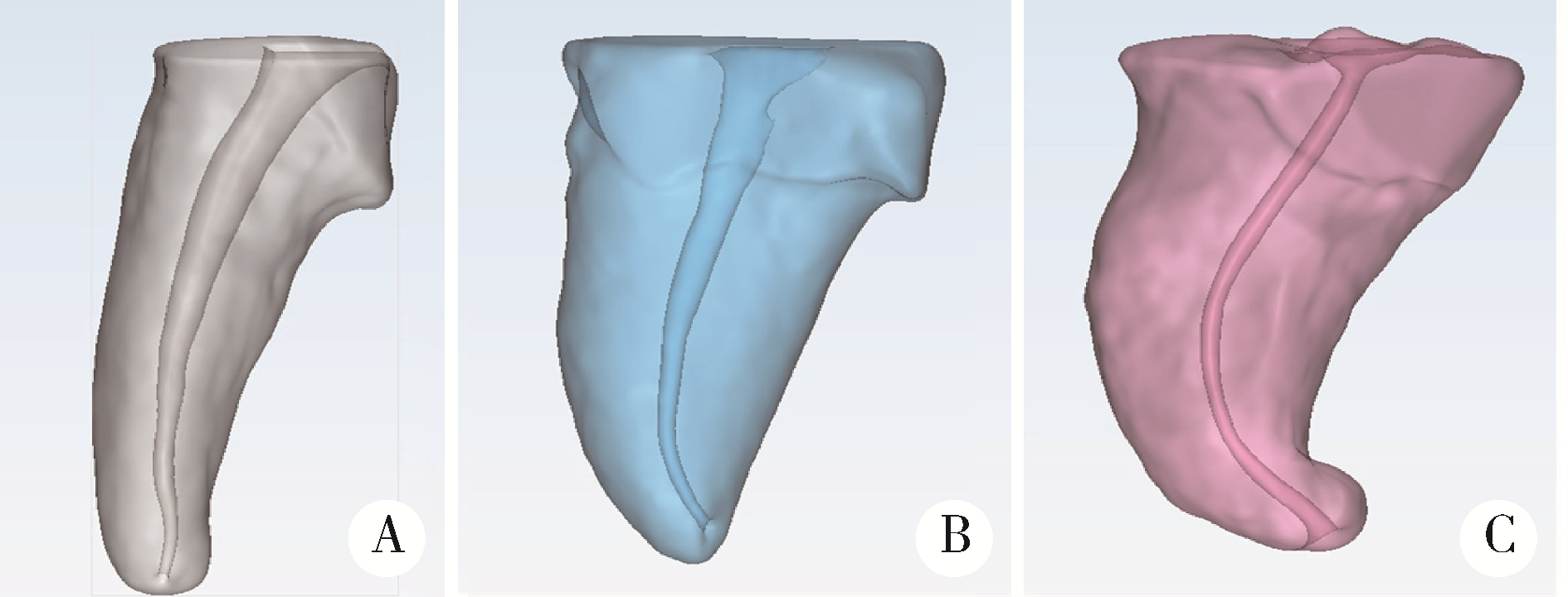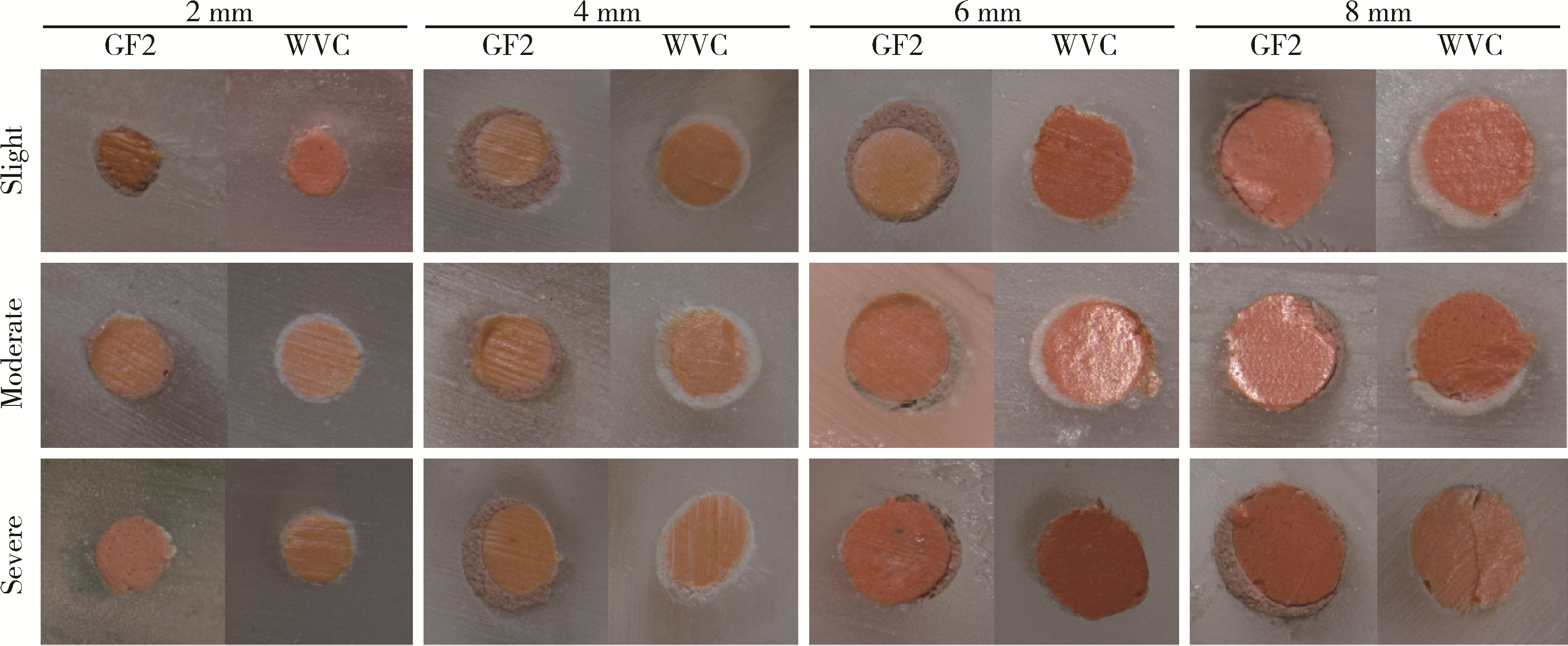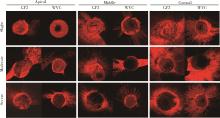Journal of Peking University (Health Sciences) ›› 2024, Vol. 56 ›› Issue (1): 99-105. doi: 10.19723/j.issn.1671-167X.2024.01.016
Previous Articles Next Articles
Sealing effect of GuttaFlow2 in curved root canals
- Department of Cariology and Endodoontology, Peking University School and Hospital of Stomatology & National Center for Stomatology & National Clinical Research Center for Oral Diseases & National Engineering Research Center of Oral Biomaterials and Digital Medical Devices & Beijing Key Laboratory of Digital Stomatology, Beijing 100081, China
CLC Number:
- R781.3
| 1 |
Clinton K , Himel VT . Comparison of a warm gutta-percha obturation technique and lateral condensation[J]. J Endod, 2001, 27 (11): 692- 695.
doi: 10.1097/00004770-200111000-00010 |
| 2 |
Libonati A , Montemurro E , Nardi R , et al. Percentage of gutta-percha-filled areas in canals obturated by 3 different techniques with and without the use of endodontic sealer[J]. J Endod, 2018, 44 (3): 506- 509.
doi: 10.1016/j.joen.2017.09.019 |
| 3 |
Jafarzadeh H , Abbott PV . Dilaceration: Review of an endodontic challenge[J]. J Endod, 2007, 33 (9): 1025- 1030.
doi: 10.1016/j.joen.2007.04.013 |
| 4 |
Iglecias EF , Freire LG , de Miranda Candeiro GT , et al. Presence of voids after continuous wave of condensation and single-cone obturation in mandibular molars: A micro-computed tomography analysis[J]. J Endod, 2017, 43 (4): 638- 642.
doi: 10.1016/j.joen.2016.11.027 |
| 5 |
Collado-Gonzalez M , Tomas-Catala CJ , Onate-Sanchez RE , et al. Cytotoxicity of GuttaFlow Bioseal, GuttaFlow2, MTA Fillapex, and AH Plus on human periodontal ligament stem cells[J]. J Endod, 2017, 43 (5): 816- 822.
doi: 10.1016/j.joen.2017.01.001 |
| 6 |
Pedullà E , Abiad RS , Conte G , et al. Root fillings with a matched-taper single cone and two calcium silicate-based sealers: An analysis of voids using micro-computed tomography[J]. Clin Oral Investig, 2020, 24 (12): 4487- 4492.
doi: 10.1007/s00784-020-03313-5 |
| 7 |
Akcay M , Arslan H , Durmus , et al. Dentinal tubule penetration of AH Plus, iRoot SP, MTA fillapex, and GuttaFlow bioseal root canal sealers after different final irrigation procedures: A confocal microscopic study[J]. Lasers Surg Med, 2016, 48 (1): 70- 76.
doi: 10.1002/lsm.22446 |
| 8 |
Zheng QH , Zhou XD , Jiang Y , et al. Radiographic investigation of frequency and degree of canal curvatures in Chinese mandibular permanent incisors[J]. J Endod, 2009, 35 (2): 175- 178.
doi: 10.1016/j.joen.2008.10.028 |
| 9 |
Schneider SW . A comparison of canal preparations in straight and curved root canals[J]. Oral Surg Oral Med Oral Pathol, 1971, 32 (2): 271- 275.
doi: 10.1016/0030-4220(71)90230-1 |
| 10 |
Wu MK , Wesselink PR . A primary observation on the preparation and obturation of oval canals[J]. Int Endod J, 2001, 34 (2): 137- 141.
doi: 10.1046/j.1365-2591.2001.00361.x |
| 11 |
Eymirli A , Sungur DD , Uyanik O , et al. Dentinal tubule penetration and retreatability of a calcium silicate-based sealer tested in bulk or with different main core material[J]. J Endod, 2019, 45 (8): 1036- 1040.
doi: 10.1016/j.joen.2019.04.010 |
| 12 | Kumar NS , Prabu PS , Prabu N , et al. Sealing ability of lateral condensation, thermoplasticized gutta-percha and flowable gutta-percha obturation techniques: A comparative in vitro study[J]. J Pharm Bioallied Sci, 2012, 4 (Suppl 2): S131- S135. |
| 13 | 张琛. 根管充填的难点和误区[J]. 华西口腔医学杂志, 2017, 35 (3): 232- 238. |
| 14 |
Elyassi Y , Moinzadeh AT , Kleverlaan CJ . Characterization of leachates from 6 root canal sealers[J]. J Endod, 2019, 45 (5): 623- 627.
doi: 10.1016/j.joen.2019.01.011 |
| 15 |
Zhong XY , Shen Y , Ma JZ , et al. Quality of root filling after obturation with gutta-percha and 3 different sealers of minimally instrumented root canals of the maxillary first molar[J]. J Endod, 2019, 45 (8): 1030- 1035.
doi: 10.1016/j.joen.2019.04.012 |
| 16 |
Oguntebi BR . Dentine tubule infection and endodontic therapy implications[J]. Int Endod J, 1994, 27 (4): 218- 222.
doi: 10.1111/j.1365-2591.1994.tb00257.x |
| 17 |
Tuncer AK , Tuncer S . Effect of different final irrigation solutions on dentinal tubule penetration depth and percentage of root canal sealer[J]. J Endod, 2012, 38 (6): 860- 863.
doi: 10.1016/j.joen.2012.03.008 |
| [1] | ZANG Hai-ling, WANG Yue, LIANG Yu-hong. Cleaning efficacy of different solvents on sealer-contaminated dentin surface [J]. Journal of Peking University(Health Sciences), 2018, 50(1): 63-68. |
| [2] | FAN Cong, YUAN Chong-yang, ZHANG Ji-chuan, WANG Xiao-yan. Effect of thermal conductivity on apical sealing ability of 4 dental gutta-percha cones [J]. Journal of Peking University(Health Sciences), 2017, 49(1): 110-114. |
| [3] | QIAO Di, DONG Yan-mei, GAO Xue-jun. In vitro study of biological characteristics of new retrograde filling materials iRoot [J]. Journal of Peking University(Health Sciences), 2016, 48(2): 324-329. |
| [4] | CHEN Xiao-Xian, LIN Bi-Chen, ZHONG Jie, GE Li-Hong. Degradation evaluation and success of pulpectomy with a modified primary root canal filling in primary molars [J]. Journal of Peking University(Health Sciences), 2015, 47(3): 529-535. |
|
||








